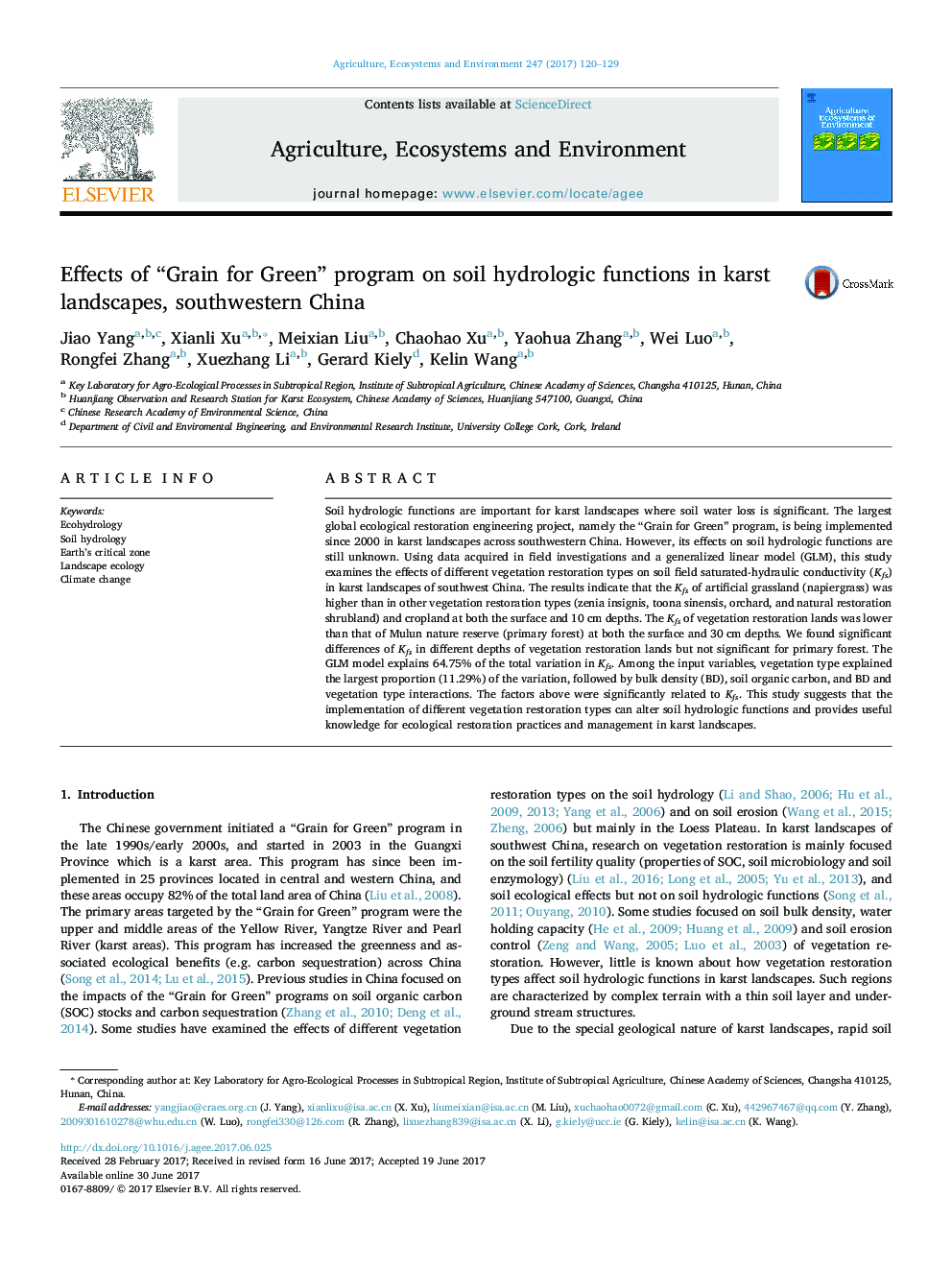| Article ID | Journal | Published Year | Pages | File Type |
|---|---|---|---|---|
| 5537984 | Agriculture, Ecosystems & Environment | 2017 | 10 Pages |
Abstract
Soil hydrologic functions are important for karst landscapes where soil water loss is significant. The largest global ecological restoration engineering project, namely the “Grain for Green” program, is being implemented since 2000 in karst landscapes across southwestern China. However, its effects on soil hydrologic functions are still unknown. Using data acquired in field investigations and a generalized linear model (GLM), this study examines the effects of different vegetation restoration types on soil field saturated-hydraulic conductivity (Kfs) in karst landscapes of southwest China. The results indicate that the Kfs of artificial grassland (napiergrass) was higher than in other vegetation restoration types (zenia insignis, toona sinensis, orchard, and natural restoration shrubland) and cropland at both the surface and 10Â cm depths. The Kfs of vegetation restoration lands was lower than that of Mulun nature reserve (primary forest) at both the surface and 30Â cm depths. We found significant differences of Kfs in different depths of vegetation restoration lands but not significant for primary forest. The GLM model explains 64.75% of the total variation in Kfs. Among the input variables, vegetation type explained the largest proportion (11.29%) of the variation, followed by bulk density (BD), soil organic carbon, and BD and vegetation type interactions. The factors above were significantly related to Kfs. This study suggests that the implementation of different vegetation restoration types can alter soil hydrologic functions and provides useful knowledge for ecological restoration practices and management in karst landscapes.
Related Topics
Life Sciences
Agricultural and Biological Sciences
Agronomy and Crop Science
Authors
Jiao Yang, Xianli Xu, Meixian Liu, Chaohao Xu, Yaohua Zhang, Wei Luo, Rongfei Zhang, Xuezhang Li, Gerard Kiely, Kelin Wang,
